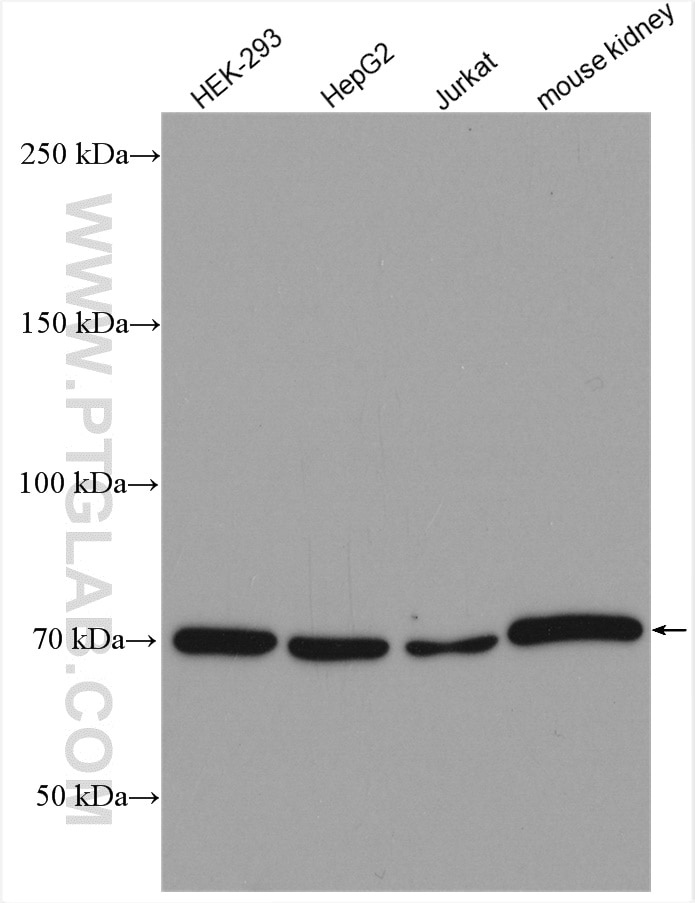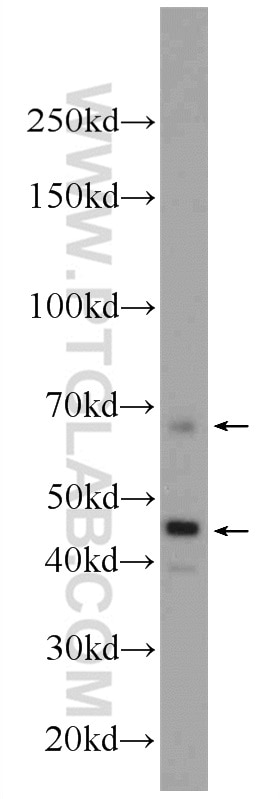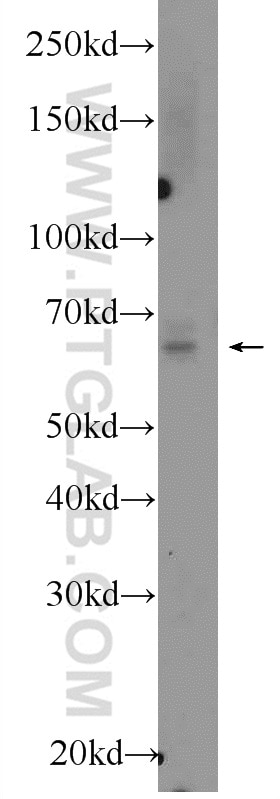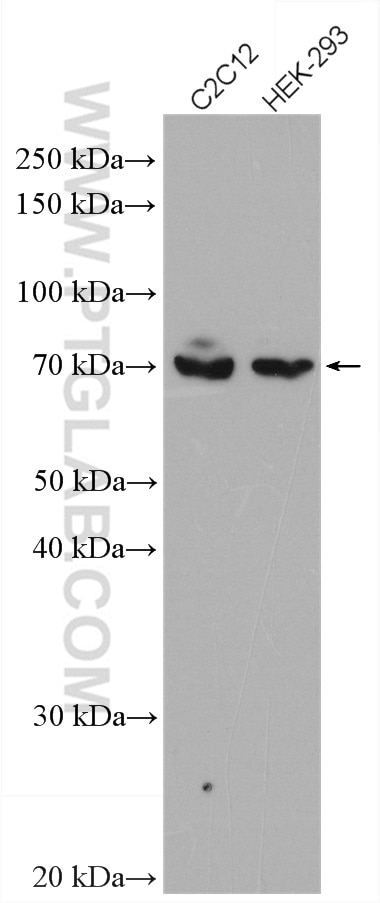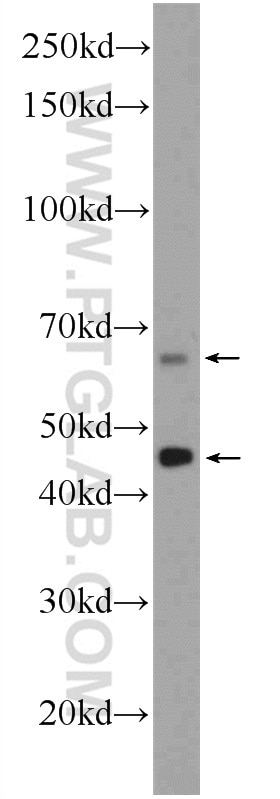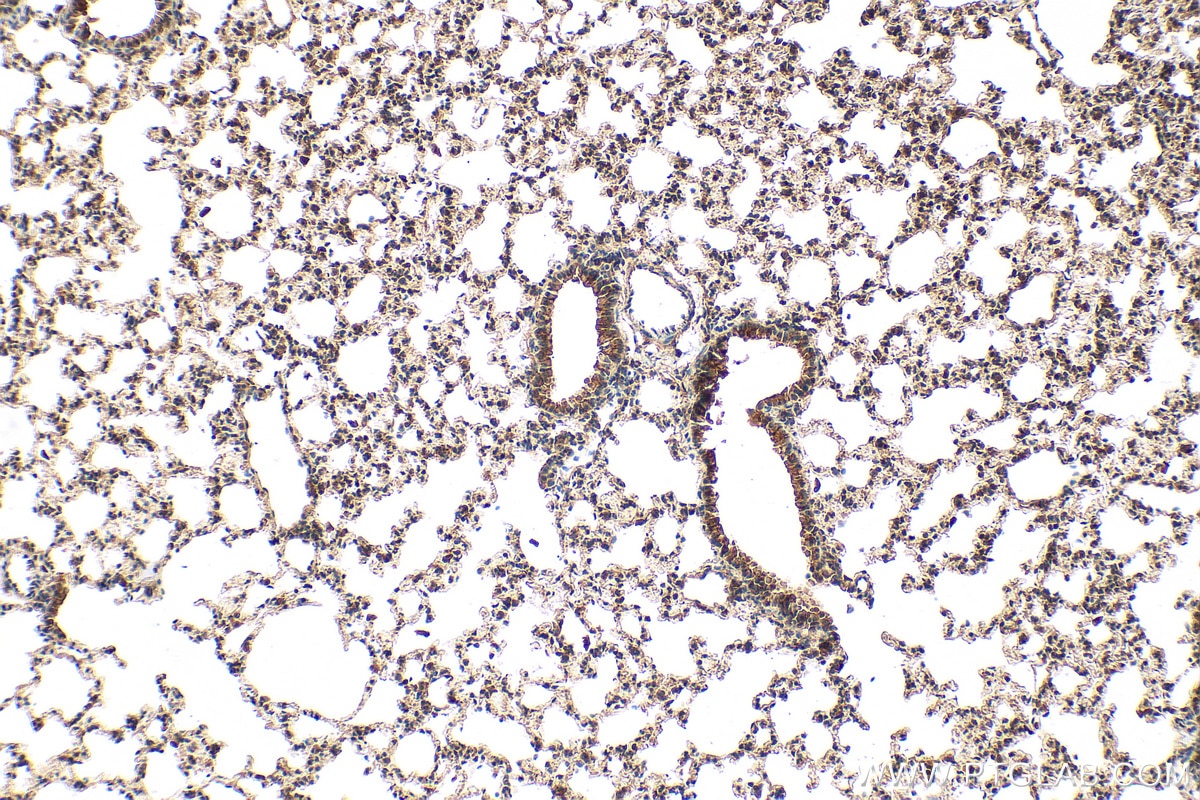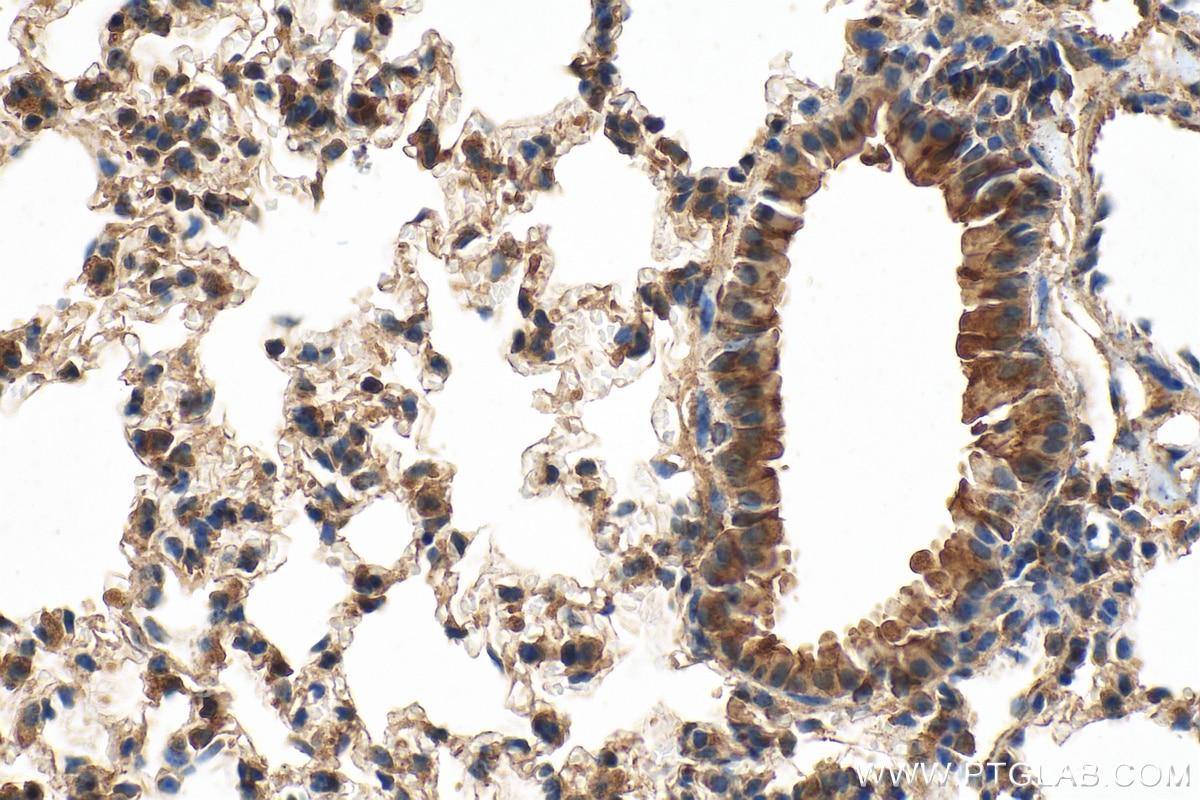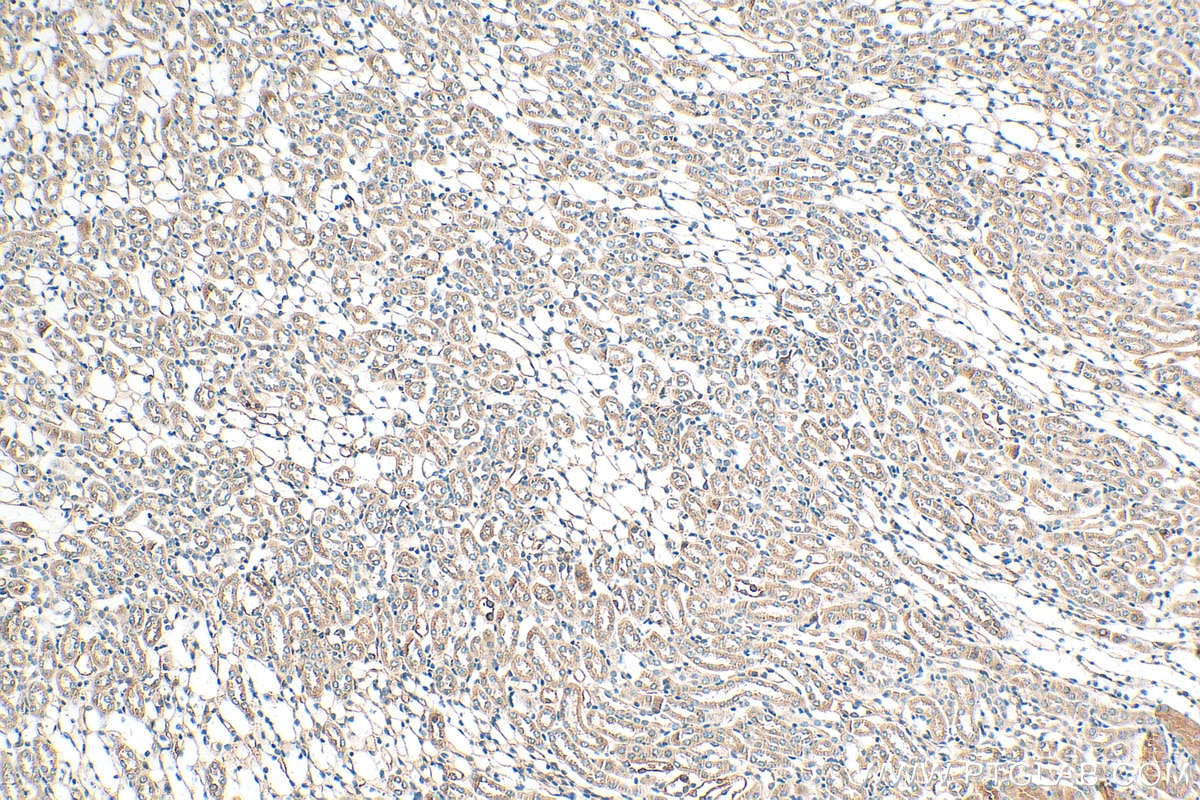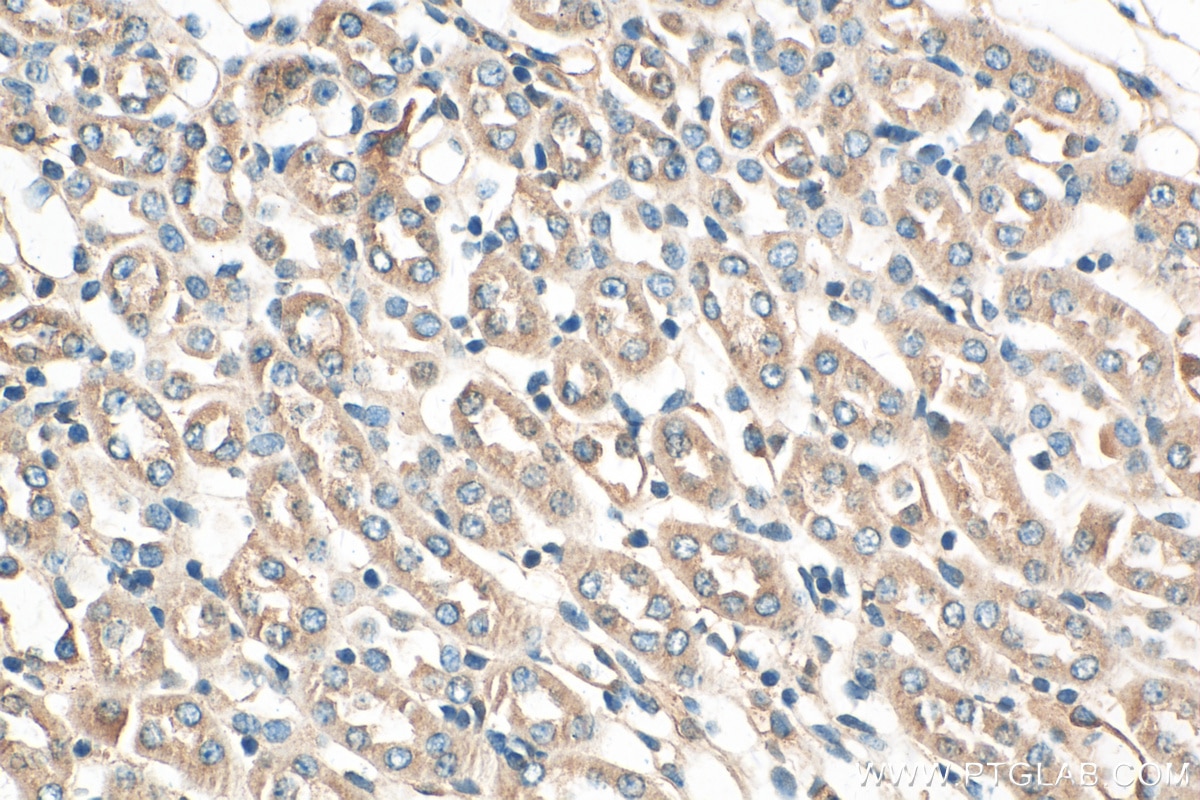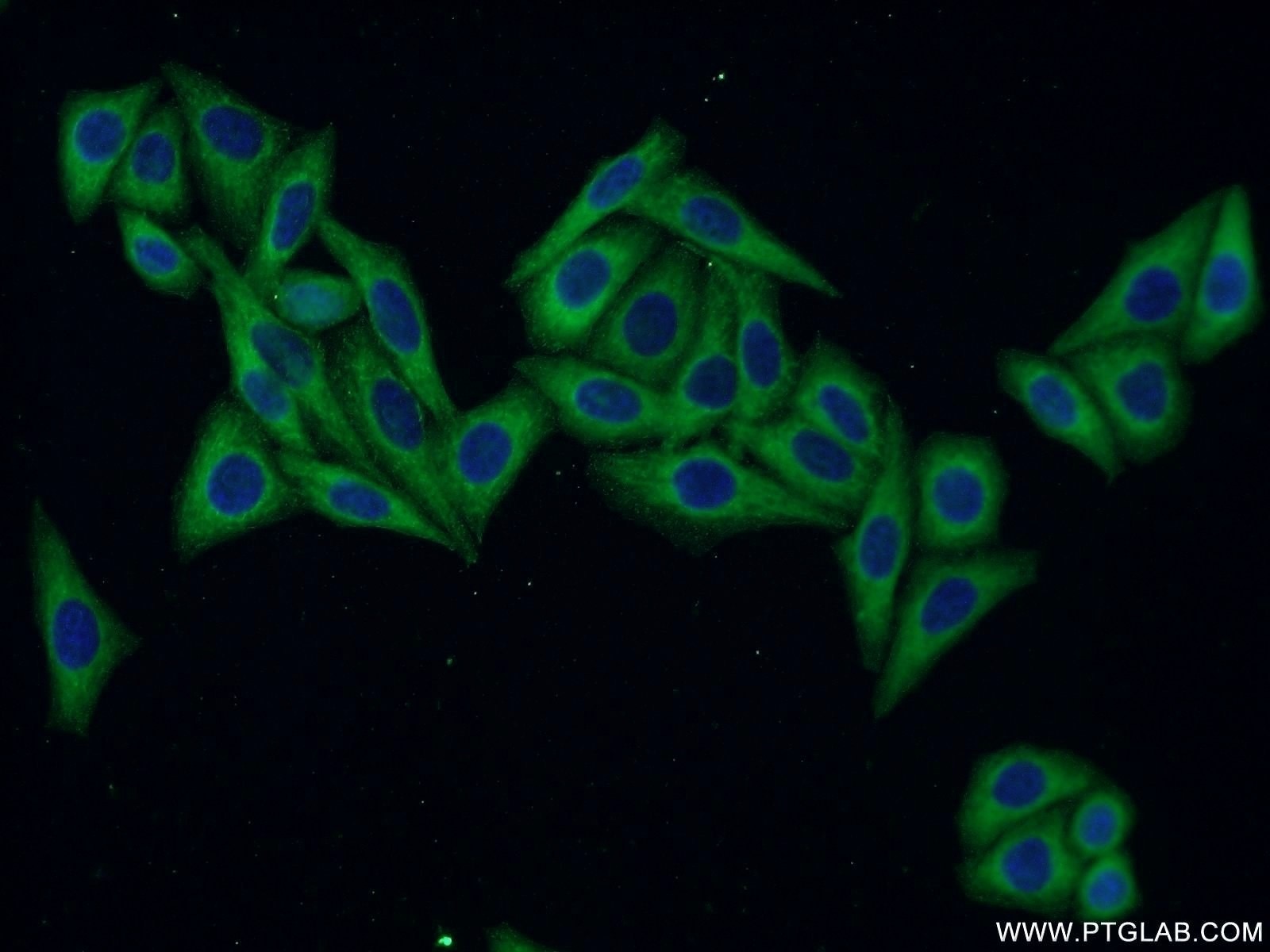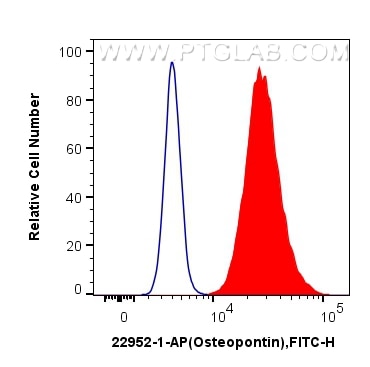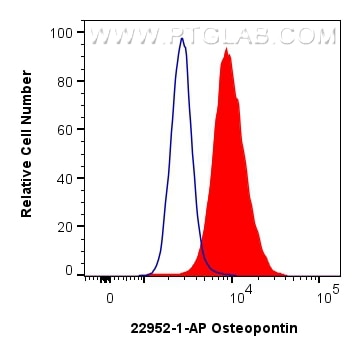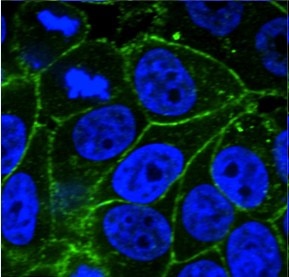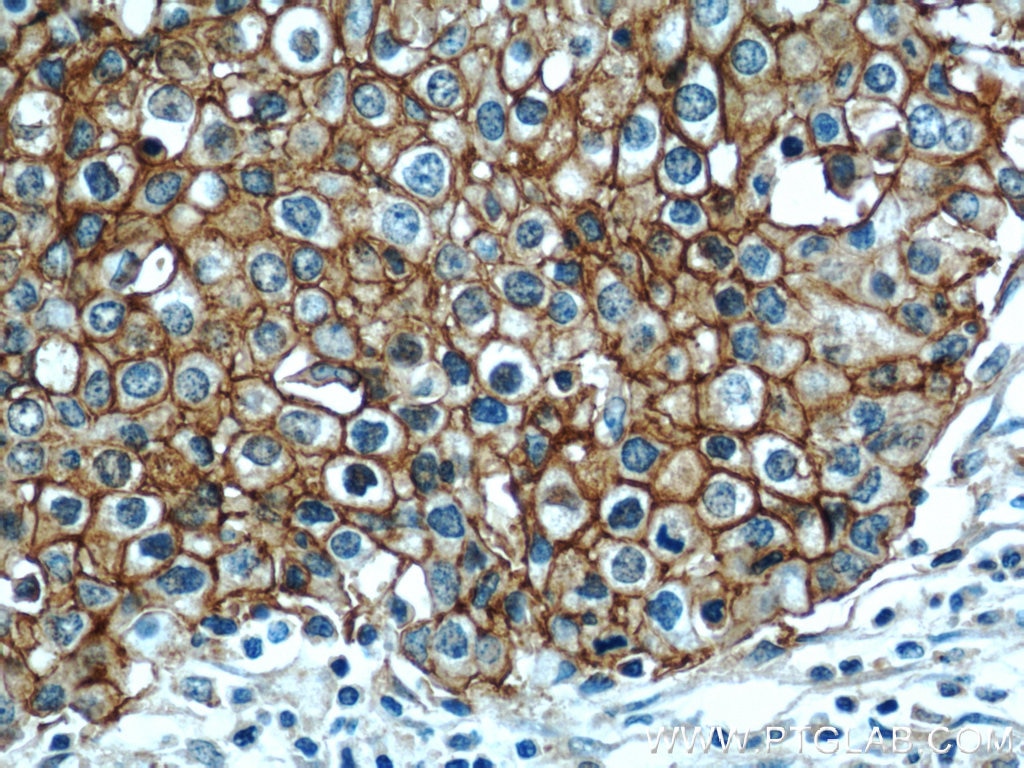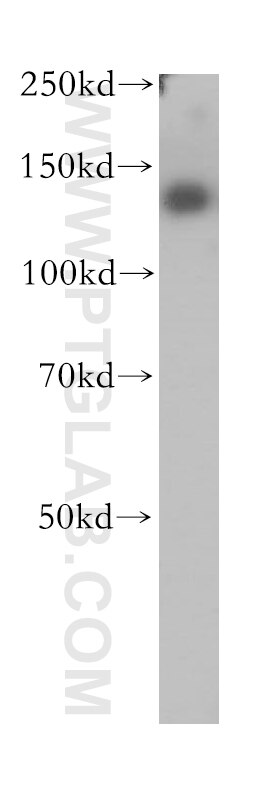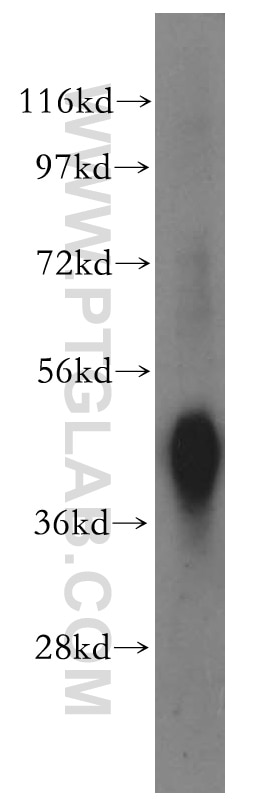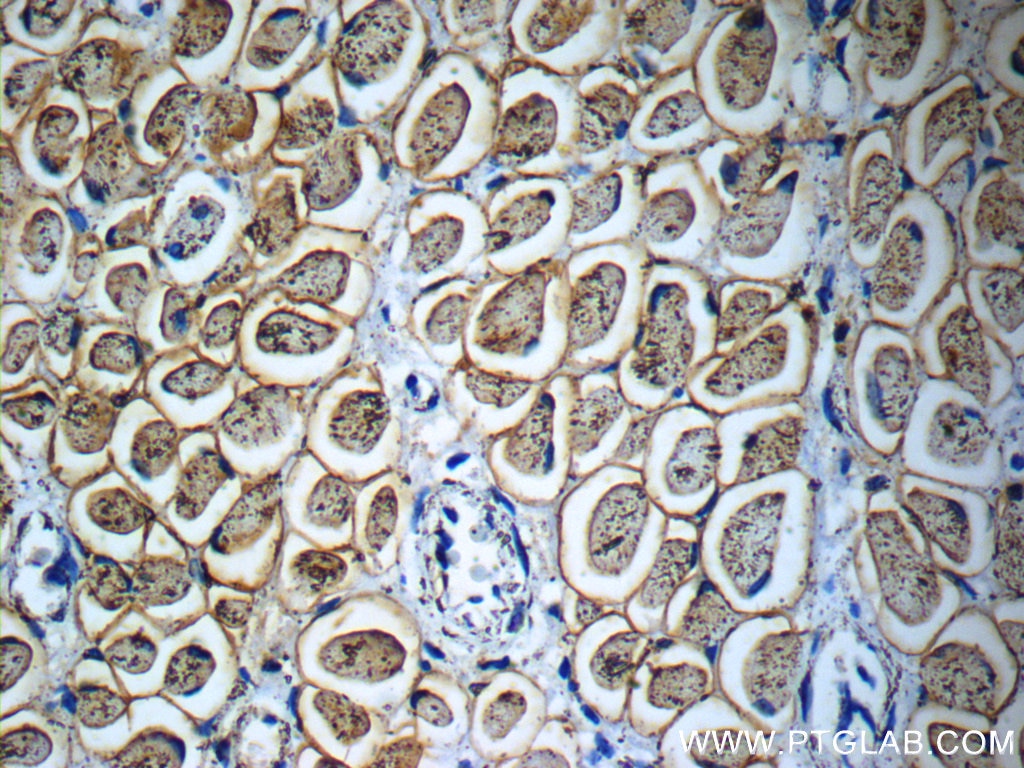- Featured Product
- KD/KO Validated
Osteopontin Polyklonaler Antikörper
Osteopontin Polyklonal Antikörper für FC, IF, IHC, WB, ELISA
Wirt / Isotyp
Kaninchen / IgG
Getestete Reaktivität
human, Maus, Ratte und mehr (2)
Anwendung
WB, IHC, IF, FC, CoIP, ELISA
Konjugation
Unkonjugiert
Kat-Nr. : 22952-1-AP
Synonyme
Galerie der Validierungsdaten
Geprüfte Anwendungen
| Erfolgreiche Detektion in WB | HEK-293-Zellen, HepG2-Zellen, Jurkat-Zellen, Mausnierengewebe |
| Erfolgreiche Detektion in IHC | Mausnierengewebe, Mauslungengewebe Hinweis: Antigendemaskierung mit TE-Puffer pH 9,0 empfohlen. (*) Wahlweise kann die Antigendemaskierung auch mit Citratpuffer pH 6,0 erfolgen. |
| Erfolgreiche Detektion in IF | HepG2-Zellen |
| Erfolgreiche Detektion in FC | HepG2-Zellen |
Empfohlene Verdünnung
| Anwendung | Verdünnung |
|---|---|
| Western Blot (WB) | WB : 1:1000-1:4000 |
| Immunhistochemie (IHC) | IHC : 1:250-1:1000 |
| Immunfluoreszenz (IF) | IF : 1:20-1:200 |
| Durchflusszytometrie (FC) | FC : 0.50 ug per 10^6 cells in a 100 µl suspension |
| It is recommended that this reagent should be titrated in each testing system to obtain optimal results. | |
| Sample-dependent, check data in validation data gallery | |
Veröffentlichte Anwendungen
| KD/KO | See 5 publications below |
| WB | See 160 publications below |
| IHC | See 53 publications below |
| IF | See 60 publications below |
| ELISA | See 1 publications below |
| CoIP | See 1 publications below |
Produktinformation
22952-1-AP bindet in WB, IHC, IF, FC, CoIP, ELISA Osteopontin und zeigt Reaktivität mit human, Maus, Ratten
| Getestete Reaktivität | human, Maus, Ratte |
| In Publikationen genannte Reaktivität | human, Kaninchen, Maus, Ratte, Rind |
| Wirt / Isotyp | Kaninchen / IgG |
| Klonalität | Polyklonal |
| Typ | Antikörper |
| Immunogen | Osteopontin fusion protein Ag19216 |
| Vollständiger Name | secreted phosphoprotein 1 |
| Berechnetes Molekulargewicht | 314 aa, 35 kDa |
| Beobachtetes Molekulargewicht | 70 kDa, 44-66 kDa |
| GenBank-Zugangsnummer | BC007016 |
| Gene symbol | SPP1 |
| Gene ID (NCBI) | 6696 |
| Konjugation | Unkonjugiert |
| Form | Liquid |
| Reinigungsmethode | Antigen-Affinitätsreinigung |
| Lagerungspuffer | PBS mit 0.02% Natriumazid und 50% Glycerin pH 7.3. |
| Lagerungsbedingungen | Bei -20°C lagern. Nach dem Versand ein Jahr lang stabil Aliquotieren ist bei -20oC Lagerung nicht notwendig. 20ul Größen enthalten 0,1% BSA. |
Hintergrundinformationen
Osteopontin (OPN), also known as SPP1, is a secreted glycophosphoprotein that belongs to the small integrin-binding ligand N-linked glycoprotein (SIBLING) family. Originally isolated from bone, OPN has been found in kidneys, vascular tissues, biological fluids, and various tumor tissues (PMID: 15138464; 16406521). OPN can interact with CD44 and integrins and regulate diverse biological processes. It has a multifaceted role in bone development and remodeling, and is also involved in the inflammatory and immune response, oncogenesis and cancer progression. The very acidic nature of OPN, as well as the presence of variable posttranslational modifications, has led to anomalous migration in SDS-polyacrylamide gels and therefore to reports of different molecular weights for OPN (PMID: 8293561). Depending on the cell and tissue source and/or the SDS-PAGE system, OPN migrates with a molecular weight of 44-80 kDa, as well as at some smaller bands corresponding to peptide fragments (PMID: 8195113; 17890765).
Protokolle
| Produktspezifische Protokolle | |
|---|---|
| WB protocol for Osteopontin antibody 22952-1-AP | Protokoll herunterladen |
| IHC protocol for Osteopontin antibody 22952-1-AP | Protokoll herunterladen |
| IF protocol for Osteopontin antibody 22952-1-AP | Protokoll herunterladen |
| FC protocol for Osteopontin antibody 22952-1-AP | Protokoll herunterladen |
| Standard-Protokolle | |
|---|---|
| Klicken Sie hier, um unsere Standardprotokolle anzuzeigen |
Publikationen
| Species | Application | Title |
|---|---|---|
Adv Mater Realizing Highly Efficient Sonodynamic Bactericidal Capability through the Phonon-Electron Coupling Effect Using Two-Dimensional Catalytic Planar Defects | ||
Cell Stem Cell Decoding the temporal and regional specification of microglia in the developing human brain. | ||
Nat Cell Biol Single-cell reconstruction of the adult human heart during heart failure and recovery reveals the cellular landscape underlying cardiac function. | ||
Cell Host Microbe Gut microbiome dysbiosis contributes to abdominal aortic aneurysm by promoting neutrophil extracellular trap formation | ||
Biomaterials A nano-conductive osteogenic hydrogel to locally promote calcium influx for electro-inspired bone defect regeneration | ||
Cell Death Differ Ferroptotic stress facilitates smooth muscle cell dedifferentiation in arterial remodelling by disrupting mitochondrial homeostasis |
Rezensionen
The reviews below have been submitted by verified Proteintech customers who received an incentive forproviding their feedback.
FH Shinford (Verified Customer) (10-26-2023) | The WB bands exhibit remarkable strength and clarity, with various treatments leading to significant changes in expression.
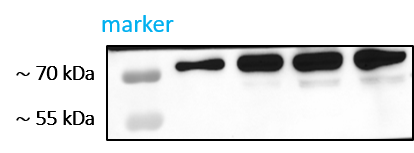 |
FH Shinford (Verified Customer) (09-24-2023) | This antibody works well in esophageal cancer and lung cancer cell lines, and the detection antibody band is clear. It is recommended to use a diluted concentration of 1:2000.
 |
FH Elisa (Verified Customer) (08-16-2023) | Tested on mouse skull sections, with appropriate blocking: give a nice stain of osteopontin, but maybe it can be optimized to be able to use an higher dilution.
|
FH Davide (Verified Customer) (09-20-2022) | The antibody works really well. Fantastic product, and the possibility to try the product with the free sample is something really appreciated. Will surely buy a full vial soon.
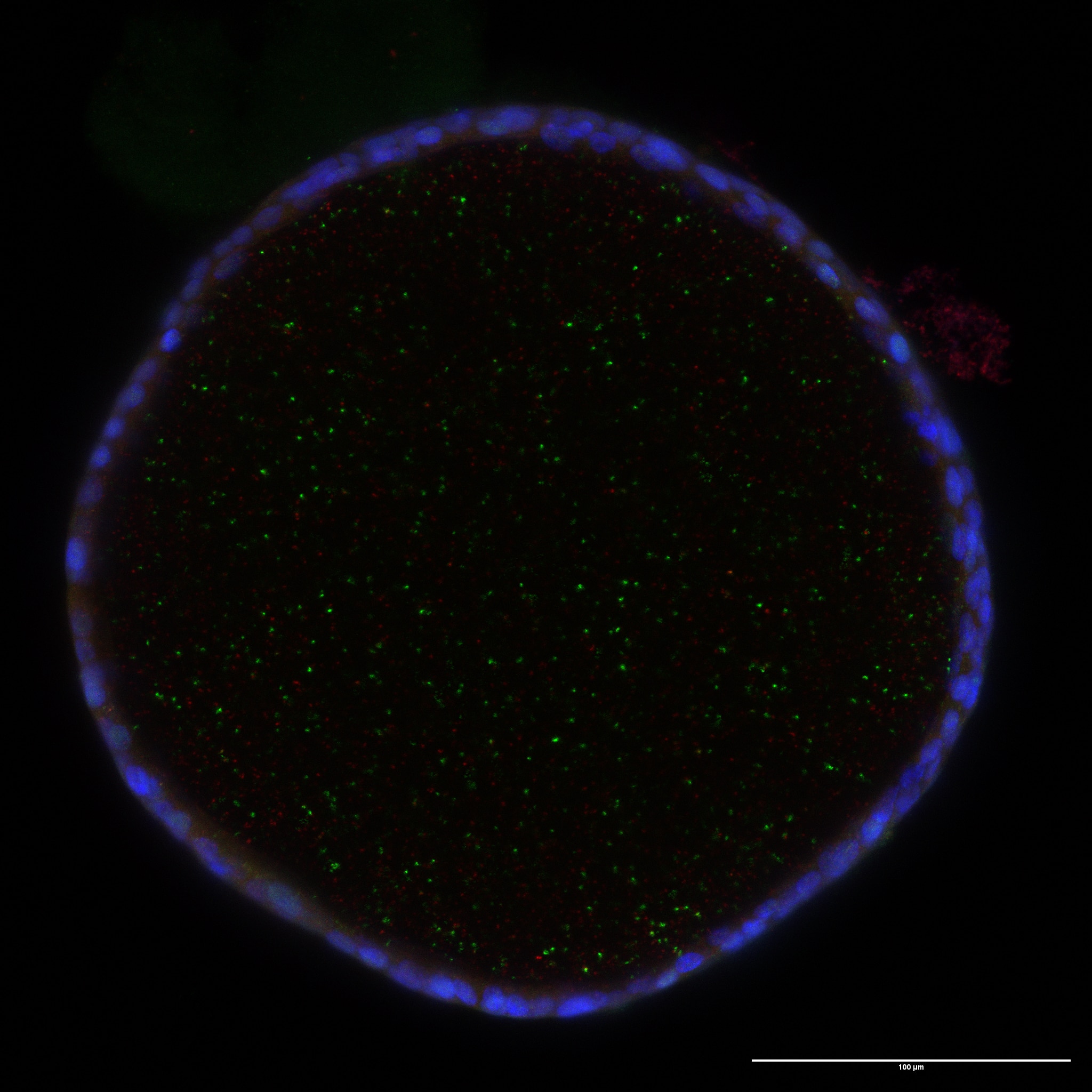 |
FH WEI (Verified Customer) (03-08-2022) | Strong specific Bands
|
FH LUNFENG (Verified Customer) (01-27-2020) | VERY GOOD
|
FH Jie (Verified Customer) (01-23-2020) | Works with one specific band and one faint non-specific band. However, can be distinguished by protein size. So works fine in general.
|
FH Jingwen (Verified Customer) (01-17-2020) | This antibody showed the specific band and staining results in both western blot and immunofluorescence staining. I strongly recommend it.
|
FH Barbara (Verified Customer) (09-28-2019) | Fluorescence-based detection of OPN (green) expression in paraffin-embedded human aortic tissue, heat mediated antigen retrival with 10mM citrate buffer (pH 6,0)
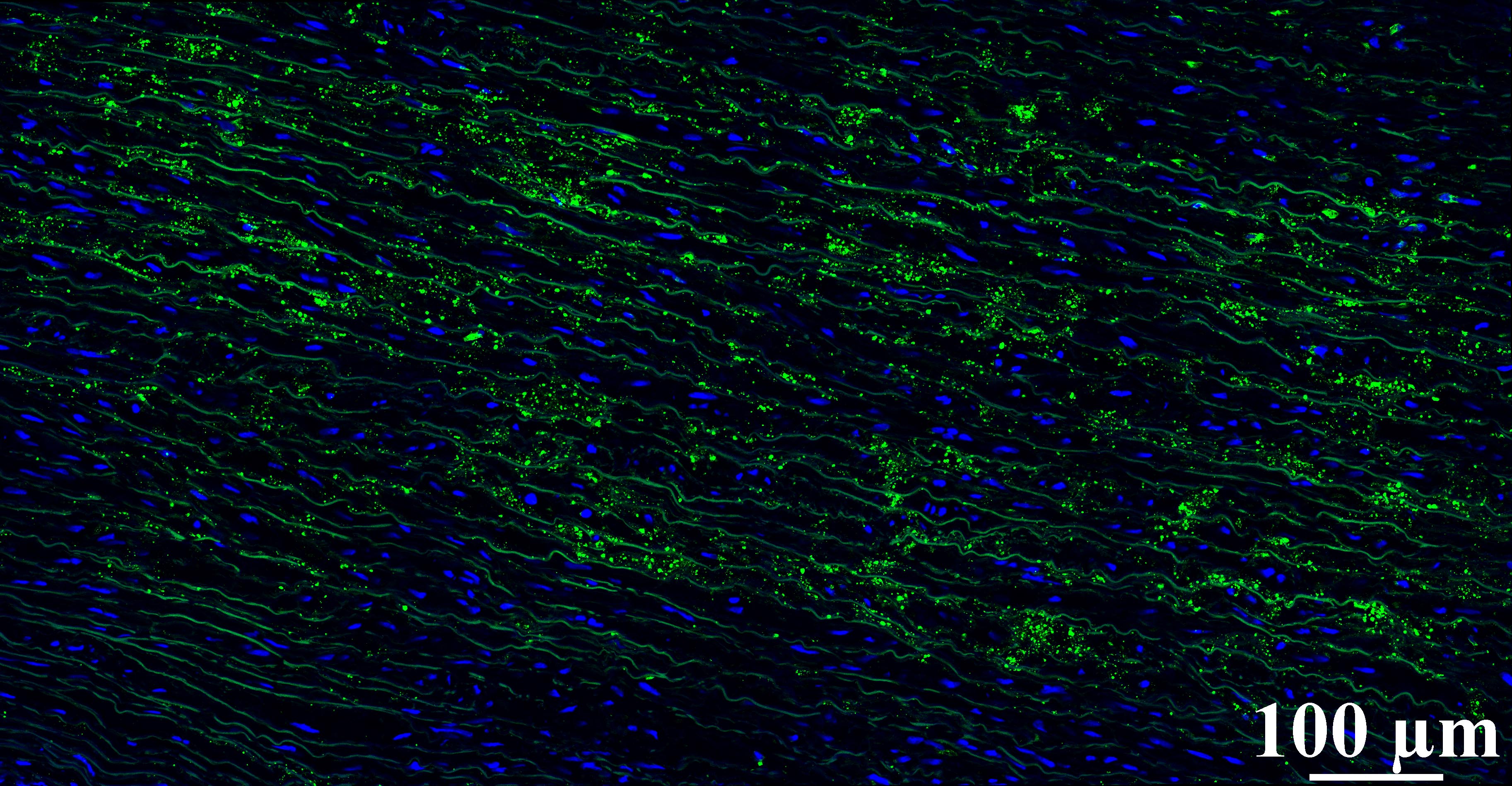 |
